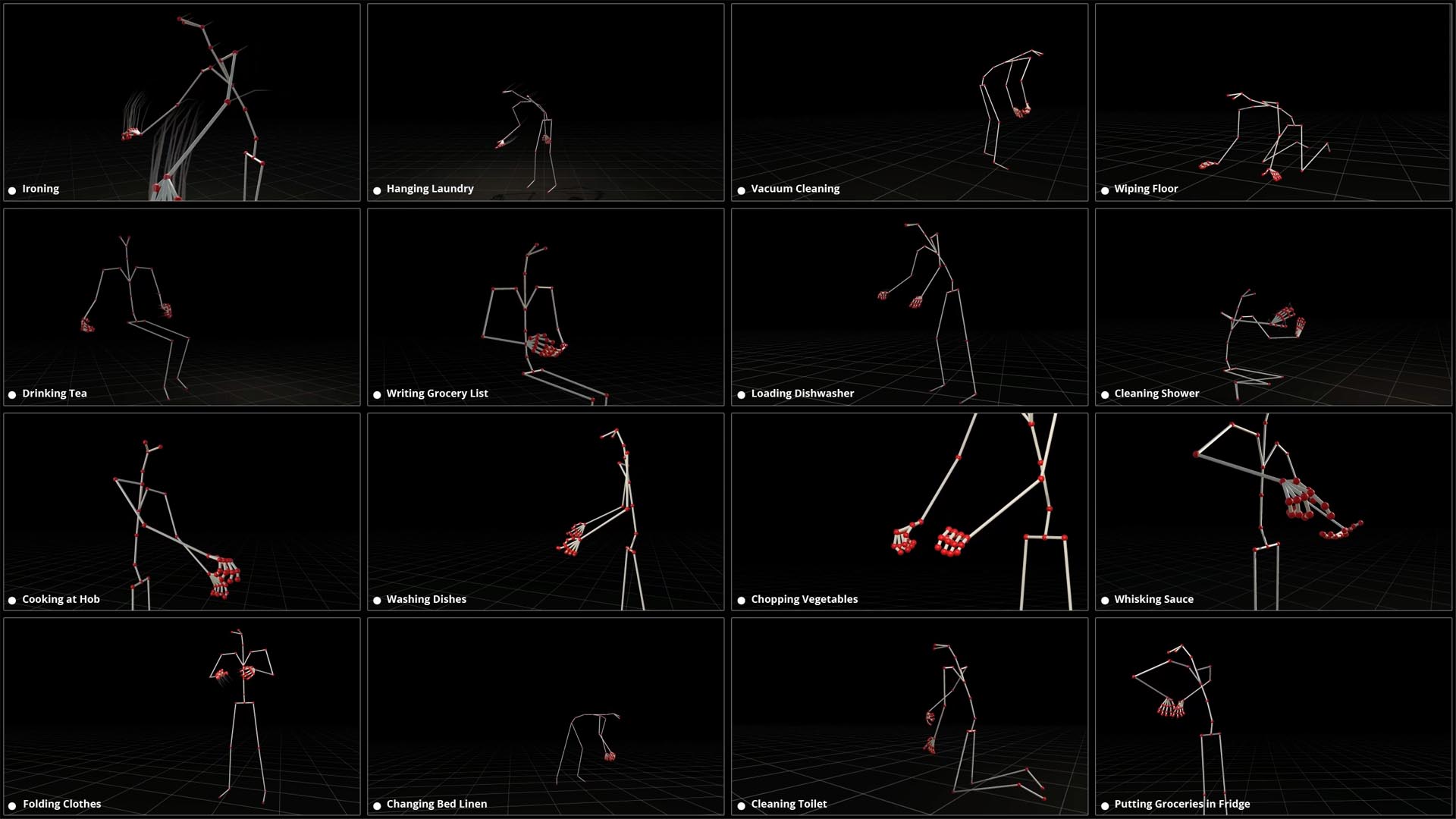SANDY FLATTS LANE [DOMESTIC LABOUR]

Sandy Flatts Lane [Domestic Labour] is a multi-channel video installation work-in-progress.
Exploring the potential role of machine learning algorithms in a suburban home, reflecting on ideas from xenofeminism and the prospects of AI on gendered labor, labors of care, and reproductive labor, including its liberatory potential.
The work takes the form of a personally situated narrative. I filmed my mother in her home and re-enacted her domestic tasks to create a situated motion dataset.
Taking cues from other feminist and cinematic portrayals of space: the social documentary film 'No Home Movie' by Chantal Akerman, shot in her mother's apartment, and the paintings of Caroline Walker who focuses on women's work in the home.
Exploring the potential role of machine learning algorithms in a suburban home, reflecting on ideas from xenofeminism and the prospects of AI on gendered labor, labors of care, and reproductive labor, including its liberatory potential.
The work takes the form of a personally situated narrative. I filmed my mother in her home and re-enacted her domestic tasks to create a situated motion dataset.
Taking cues from other feminist and cinematic portrayals of space: the social documentary film 'No Home Movie' by Chantal Akerman, shot in her mother's apartment, and the paintings of Caroline Walker who focuses on women's work in the home.



My point of departure is the re-enactment of domestic labor, for which I have used motion capture technology to develop an algorithmic rendition.
I imagine ways to politicize repositories of 3D digital assets and datasets that typically avoid such positioning.
Thinking about the near future of the home as a space that produces datasets used to train domestic robots and other learning algorithms that are set to enter intimate spaces and care settings - especially those contexts of unpaid and low-paid work.
The privacy of the home is a domain increasingly targeted by the looming vectorization of the body and domestic space. We hear of technology originally developed for prison surveillance, gradually penetrating the home and workplace.
The project situates a discussion on the future of technology and how we want to live with it in spaces associated with deep intimacy, privacy, and anomie.
I imagine ways to politicize repositories of 3D digital assets and datasets that typically avoid such positioning.
Thinking about the near future of the home as a space that produces datasets used to train domestic robots and other learning algorithms that are set to enter intimate spaces and care settings - especially those contexts of unpaid and low-paid work.
The privacy of the home is a domain increasingly targeted by the looming vectorization of the body and domestic space. We hear of technology originally developed for prison surveillance, gradually penetrating the home and workplace.
The project situates a discussion on the future of technology and how we want to live with it in spaces associated with deep intimacy, privacy, and anomie.

